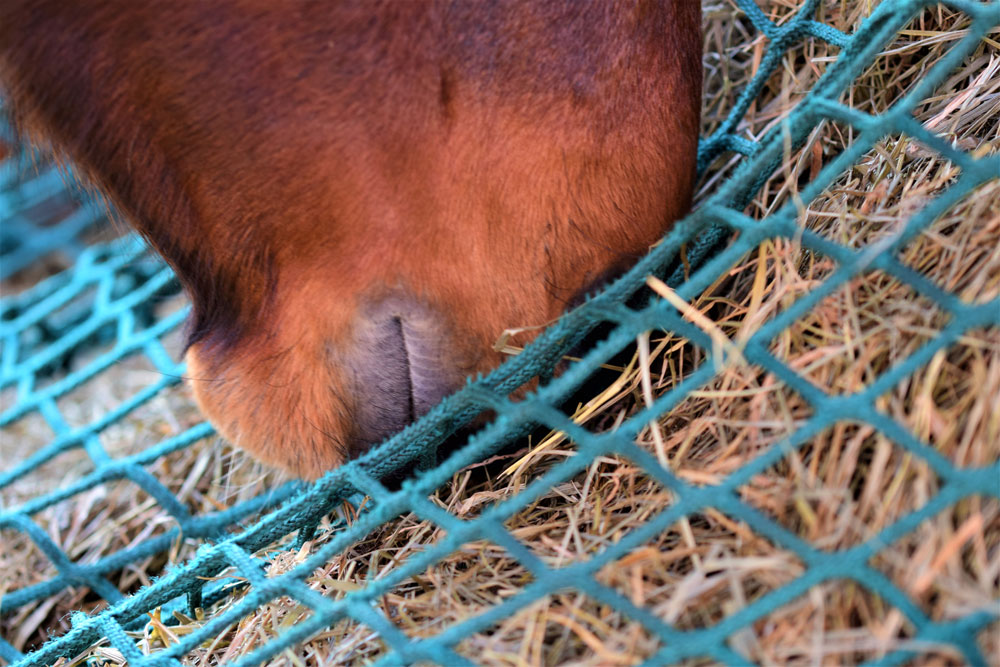
Nutrition, feeding management, and gastric health of horses were important topics at the 2020 AAEP Virtual Convention. In this article we look at gastric ulcers, chronic colic, bowel inflammation and hindgut dysfunction in horses.
Equine Gastric Ulcer Syndrome
Strategies for managing squamous equine gastric ulcer syndrome (EGUS) include maximizing pasture turnout and/or free-choice access to forage. If that isn’t possible, then offer 4-6 meals per day. Limit starch content in concentrate meals to <1 g/kg body weight. Feed small, frequent concentrate meals and rely more on fat and fiber as energy sources. Include alfalfa hay at 5-6-hour intervals to serve as a stomach buffer. Other gastric protectants and buffers help to maintain pH to promote healthy gastric mucosa. Pectin-lecithin complex and seaweed-derived calcium might be useful alternatives.
Chronic Colic in Horses
Many risk factors contribute to chronic colic. Some of them include:
- Recent change in a batch of hay
- Recent change in type of grain or concentrate
- Decreased pasture exposure
- Feeding more than six pounds of oats per day
- Hay from round bales is often more mature with high fiber, or is poor quality
- Feeding <1% body weight of forage per day
- Poor-quality roughage
- Alfalfa rich in protein and minerals increases risk of enteroliths
- Recent change in housing
- Increased hours in the stable
- Anthelmintic treatment in the prior seven-day period
- Failure to deworm regularly
- Failure to have routine dental care for the horse
- Lack of regular exercise or free-will exercise on pasture
- Recent change in exercise protocol
You can see that many of these risk factors are related to management strategies. Kelly Vineyard, PhD, a senior nutritionist at Purina Animal Health, suggested strategies to help reduce these risks.
These include:
- Maximizing pasture access
- obtaining high-quality hay and forage products
- testing forage for sensitive horses
- slowing intake with specialized hay nets
- offering small, frequent concentrate meals three or more times a day; and
- encouraging water intake.
Bowl Inflammation and Hindgut Dysfunction
Horses with bowel inflammation and hindgut dysfunction can be improved by reducing the mechanical and physical demands on the colon. This is accomplished by decreasing or eliminating long-stem forage.
Methods to promote healing of the intestinal mucosa rely on decreasing the total dry matter intake and ingesta particle size to decrease trauma to the intestinal mucosa. This might be achieved by feeding smaller, more frequent meals, and by using chopped forage to decrease stem length.
Severe cases might need a low-bulk diet using only complete feed pellets fed at 1.2-1.4% body weight for maintenance. Vineyard stressed that it can take 3-8 months to see results.
Finally, Vineyard recommended using daily psyllium supplement—1/3 cup every 12-24 hours—to increase availability of butyrate for microbiome support and to provide nutrients for a healthy intestinal barrier.
Check out another article written from presentations offered at the 2020 AAEP Convention: Feed for Optimal Digestive Health in the Performance Horse.


